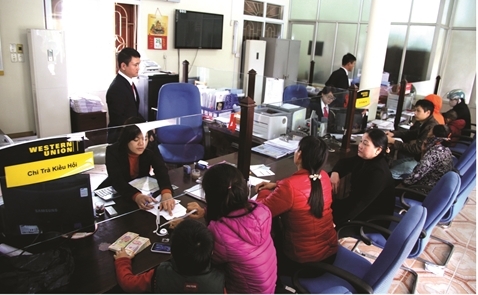|
Overseas
remittances fall, worrying real estate developers
Kieu hoi
(overseas remittances) to Vietnam unexpectedly decreased in 2016, raising
concerns among real estate developers as kieu hoi are an important source of
capital for the property market.

According
to Izumi Devalier from HSBC (Hong Kong and Shanghai Banking
Corporation), 70 percent of kieu hoi are poured into business.
According
to the State Bank, one-fifth of kieu hoi in 2015, or $2.5 billion, flowed
into the real estate market.
According to Nguyen Hoang Minh, deputy director of the State Bank’s HCMC Branch, only $5 billion of kieu hoi had been remitted to the city by the end of 2016. In general, the volume of kieu hoi to HCMC accounts for more than 50 percent of total kieu hoi to Vietnam. This means that the total kieu hoi volume to Vietnam in 2016 was no more than $10 billion. The figure was much lower than the $12.2 billion in 2015.
For many
years, kieu hoi has been considered an important capital source like FDI
(foreign direct investment) and ODA (official development assistance).
According to the Central Institute of Economic Management (CIEM), in 1999-2015, Vietnam received $120 billion worth of kieu hoi and was among the biggest kieu hoi receivers in the world. The State Bank’s HCMC Branch estimated that the real estate market attracted 52 percent of kieu hoi volume in 2014. The figure reduced to 21.6 percent in the next two years, but it is still an important source of capital for the real estate market. Many reasons have been cited to explain the $2 billion decrease in kieu hoi in 2016. The US dollar has become more attractive in the US thanks to a higher interest rate. Meanwhile, the US is the source of 60 percent of kieu hoi to Vietnam. The kieu hoi flow from the EU, Japan, South Korea and Malaysia also decreased because of the difficulties overseas Vietnamese workers met in the year. Tran Thi Mai Huong from the Hanoi National Economics University has urged the government to apply measures to encourage kieu hoi flow to Vietnam, including low service fees and preferences for kieu hoi recipients. A CIEM report showed that 30 percent of kieu hoi in 2012-2013 was put into investment and production, while the figure dropped to 16 percent in 2014 and then surged to 70 percent in 2015.
Le
Van, VNN
|
Thứ Năm, 9 tháng 2, 2017
Đăng ký:
Đăng Nhận xét (Atom)
Không có nhận xét nào:
Đăng nhận xét